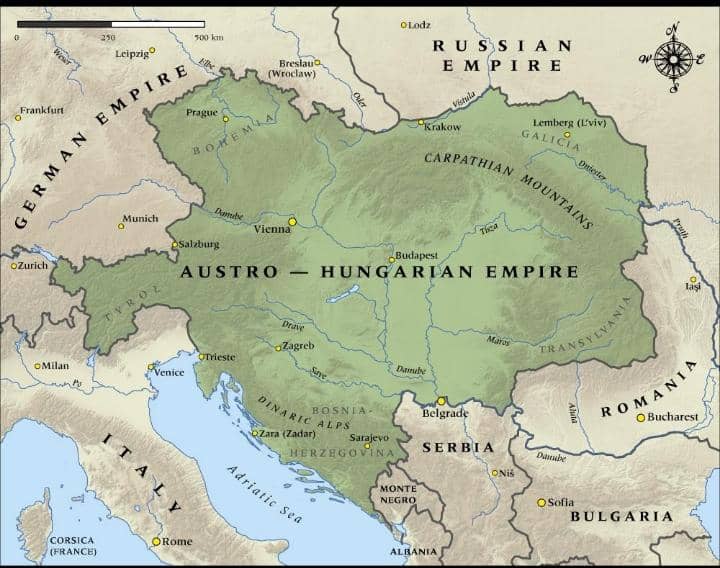The Austro-Hungarian Empire, a multi-national entity formed in 1867, was a significant power in Central Europe until its collapse following World War I.
The empire was characterized by a dual monarchy, comprising the Austrian and Hungarian states, each with its own parliament and government, yet united under the Habsburg monarchy.
The empire’s diverse population included various ethnic groups, leading to rising nationalistic sentiments that would ultimately contribute to its downfall.
The assassination of Archduke Franz Ferdinand in 1914 triggered World War I, during which Austria-Hungary fought alongside the Central Powers.
However, military defeats and internal strife weakened the empire. By 1918, the war’s toll had exacerbated economic hardships and fueled nationalist movements among its various ethnic groups, including Czechs, Slovaks, Croats, and Serbs, who sought independence.
In October 1918, a series of declarations marked the empire’s disintegration. The Hungarian National Council proclaimed independence, followed by similar actions from Czechoslovak and South Slav leaders.
The situation escalated as the Allies rejected Austria-Hungary’s attempts for a separate peace, leading to the signing of an armistice on November 3, 1918, which effectively ended the empire’s existence.
The Treaty of St. Germain in 1919 formalized the dissolution, recognizing the independence of several successor states, including Czechoslovakia, Hungary, and the Kingdom of Serbs, Croats, and Slovenes. The treaty also imposed territorial losses on Austria and Hungary, reshaping the political landscape of Central and Eastern Europe.
The dissolution of the Austro-Hungarian Empire serves as a historical example of the complexities of multi-ethnic empires and the impact of nationalism.
Its collapse not only altered the map of Europe but also set the stage for future conflicts and the emergence of new nation-states, profoundly influencing the region’s political dynamics in the 20th century.


One Reply to “The Fall of the Austro-Hungarian Empire”